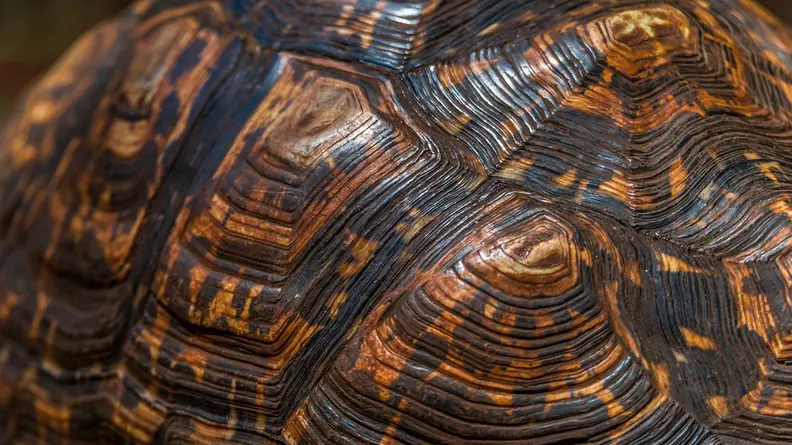The shell is widely regarded as the most distinctive feature of a turtle’s body. Most of our readers’ questions concern the shell’s origins and functions. In today’s article, we’ll examine whether turtles can feel their shells and how they got them. But did you know tortoises have feelings in their shells?
Tortoise shells are used for more than just protection. The shells are directly connected to the tortoise’s nervous system. The shell’s nerves allow it to transmit both pleasure and pain sensations.
What Makes The Tortoise’s Shell and Turtle’s Shell Unique?
The turtle shell is a shield found on tortoises, turtles, and terrapins, though a zoologist would say they’re all turtles. It’s designed to protect all of a tortoise’s internal organs, and in some strange cases, it’s even evolved to protect the animal’s head.
While tortoise shells are more rounded and resemble a dome shape, their makeup is similar to that of a turtle. Tortoise shells do have nerve endings that allow them to feel their surroundings. As a result, a tortoise can detect when its shell is touched, rubbed, or scratched.
The shell is made of a modified bone, similar to the bones of any other reptile, not just turtles, and it consists of skeletal bone and dermal bone, which is bone formed by accretion within the tortoise’s dermis or skin. In contrast to the skeletal bone, dermal bone lacks cartilage.
If you’re wondering if humans have dermal bone, the answer is yes. They certainly do. This type of bone includes our clavicle or collar bone. Nearly all fish, mammals, and reptiles have some form of dermal bone. (Source: Tortoise Owner)
The shell, unlike some other aspects of tortoises, has received extensive research. Why? Because it makes it simple to identify a tortoise’s species and gender, and it aids scientists in better understanding the history of tortoises and the movement of tortoise populations.
While humans do not generally use turtle shells, the hawksbill turtle’s shell, also known as tortoiseshell, has been used as a decorative material. (Source: Tortoise Owner)
Difference Between Tortoise’s Shell and Turtle’s Shell
The primary distinction between a tortoise’s and turtles’ shells becomes apparent. The scutes of a turtle must be shed on an annual basis. This is because they are constantly submerged in water and susceptible to various infections and parasites.
The turtle stays fresh and clean and is less likely to contract serious diseases by sloughing the scutes and then completely regrowing them.
However, in the case of a tortoise, this is not the case. Because tortoises cannot shed scutes, they do not regrow.
While a turtle sheds its scutes and can thus grow new scutes as it grows larger, when a tortoise grows larger, the entire shell moves upward, and a new layer of scutes grows around the base of the existing shell.
This is critical to understand because scute damage or infection can be far more dangerous to a tortoise in the long run than a turtle, eventually replacing the damaged scutes. (Source: Tortoise Owner)
Image from YesGlasses
